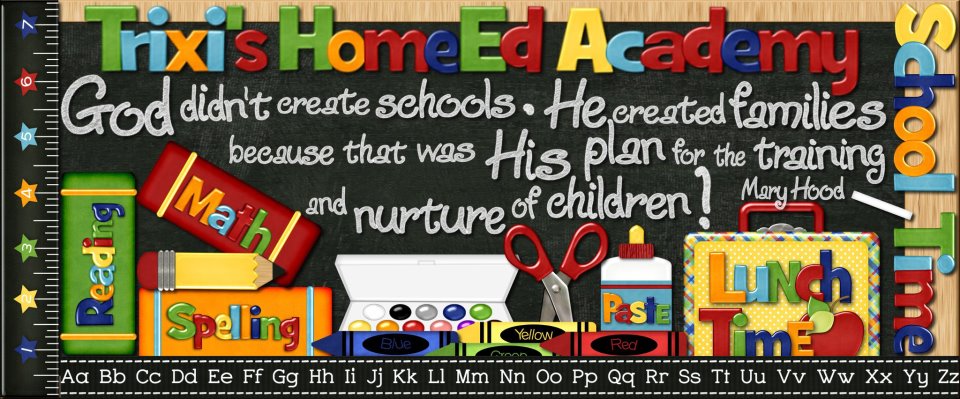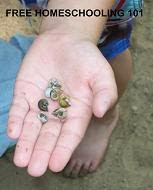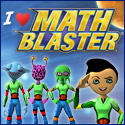By Dianne Craft, MA, CNHP
God has a wonderful sense of humour, I believe. He wants us to grow and stretch. One of the ways He does this is to give us children who are very different from each other. Just as it is very likely that a right-brain person will have a left-brain spouse, so it is that if our firstborn is left-brain dominant, the next child likely will be right-brain dominant.
In my teaching experience, 80 percent of the bright, hardworking, struggling learners I saw were right-brain dominant. Does that mean that being right-brain dominant is a weakness? Not at all! As you know, Einstein was a flaming right-brainer.
Then why the discrepancy? The discrepancy lies in the fact that most curriculum is designed to teach in a more left-brain style. We call left-brain teaching “Plan A,” because it is the most common method used. Workbooks, worksheets, rote memorization (math facts), timed tests, rules-based spelling and phonics, lecture, learning facts for a test, and learning vocabulary by looking up the meanings of the words in a dictionary and writing it out are all left-brain activities. If you have a child at home who is “balking” at or struggling with doing the schoolwork that fits the description above, you probably are working with a right-brain dominant child.
Helping this child become successful doesn’t require an overhaul of your curriculum but rather a change in your teaching strategies for this child. It isn’t as hard as it sounds. In fact, it’s easy, fun, and inexpensive.
Right-Brain Spelling Strategy
Let’s look at the teaching of spelling words. We all want our children to be good spellers and are very frustrated when our methods aren’t working. The most common complaint I receive is that the child learns the words for the test but continues to misspell them in other writing tasks. Why is that happening? It is because most spelling programs teach spelling words using “phonemic patterns” or by requiring the student to write the word multiple times. However, if a child has an auditory processing problem so that memorizing the phonemic rules for spelling is difficult, he will remain a poor speller, particularly with common sight words, unless a totally different method is introduced.
If your child doesn’t have an auditory processing problem, but has a writing processing glitch or a true dysgraphia, then the act of writing the words multiple times does not get the information into the child’s long-term memory storage (housed in the right brain), because so much of the child’s battery energy is going into the writing process (or keyboarding process). This was the situation I experienced when I was teaching my Twice Exceptional (i.e., gifted with a glitch) middle schoolers. Their spelling was so primitive that it was embarrassing to them. Spell-check often couldn’t help them, because they weren’t even spelling the word well enough to have the correct word come up. That’s when I decided to abandon all “common” methods of spelling. In the process, I found that poor spelling is one of the easiest problems to solve, and I have regularly seen three years’ spelling growth in one year, using this simple method.
The Eyes Have It
Have you ever seen a picture of a recent Spelling Bee winner in a newspaper article? If you have, you may have noticed that the student’s eyes were in an upward position. In other words, it looks like the speller is seeing the word he is spelling—on the ceiling. This makes sense in light of the recent brain research that tells us that we can train our right brain (the hemisphere that houses our photographic memory) to become more responsive by looking upward with our eyes. In other words, we use our eyes to help us think, as well as to see.
When the student is looking up, he is “seeing” the word in his head. Because he is visualizing the printed word, he can spell it backwards as easily as he can spell it forwards. You can train your child at home to use this very efficient strategy. Not only will it be painless, but you will find that the right brain is responsible for visual memory and long-term memory, so your child will remember how to spell his words long past the week of the spelling test.
This efficient right-brain spelling strategy is simple.
-
Give your child a pre-test consisting of a short list of words from the “most commonly used words” list. (You can request this free list by contacting me at
craft@ecentral.com.)
-
For the words that were spelled incorrectly, take the letters that were wrong (or left out), and colour them and “weird” them up. (An example: If the child spelled Saturday as Saturday, put the Sat-r-day in black marker on a card, since he knew those letters. Write the u in blue marker, with wavy lines in it to represent water, along with a stick figure diving into the water. You can add a story, like “They all sat around on Saturday and they got bored, so the brothers decided to go swimming.)
-
Hold the card straight up in front of your child so that his eyes must look up in order to read the card. (Make sure his chin isn’t up; only his eyes should point upward.) Have him glance at the card, and then bring it down while his eyes remain looking up, where the card had been. Flash this card in the air, five or six times, until your child can “see” it in the air and easily spell it forwards and backwards. If your child can’t easily “see” it in the air, show it to him a few more times, or put more “mental glue” on it by adding more colour or a more detailed picture. (Hint: Putting “blood” dripping from the letter is a sure-fire way to get it to stick with boys!)
-
Each day of the week, for a few minutes each day, review the card using this same visual method. Be sure to require the child to spell the word both forwards and backwards each day.
-
Your child’s “photographic memory” will become stronger and stronger as you use this method. This process can be streamlined as the child’s photographic memory becomes stronger and more efficient.
Remember that your child’s visual memory is his greatest strength. As you help him develop that, using spelling words, math facts, or anything, you will see learning and memorizing become much easier. The success a child feels when he can “see it” is priceless.
We call right-brain teaching strategies Plan B. If you have a child who has underdeveloped memory strategies (spelling, math facts, rules), has an auditory processing problem, or is a struggling reader (can’t remember phonics, sight words, etc.), or if you simply have a child who does not respond well to all the other curricula you have and dislikes schoolwork intensely, you will find that these right-brain teaching strategies are effective tools. They can help the child/teenager get in touch with the “smart part of himself.”
It truly is remarkable to watch students respond to these easy, visual strategies. Dr. Peter Russell, author of The Brain Book, says that there are many more “megabytes” in our right-brain hemisphere than in our left brain. The left brain is auditory, and the right brain is visual.
We often say that a picture is worth a thousand words. That is what the brain thinks too. We can store vast amounts of data and information in our right, visual hemisphere with great ease. Learning doesn’t have to be so hard.
It does not matter if you think your child is right-brain dominant or left-brain dominant. Remember that right-brain teaching is Plan B. If Plan A (auditory, writing, rules, and workbooks) is keeping your child frustrated and he is finding learning to be difficult, it is easy to switch to Plan B.
I used right-brain teaching methods for spelling, vocabulary, phonics, math, paragraphing, and compositions—exclusively—with my bright but struggling learners. At the end of one year, they didn’t need my class any more, because then they knew how to use their wonderful learning strength . . . the right brain!
Dianne Craft, a former homeschooling mother, has a master’s degree in special education and is director of Child Diagnostics, Inc., a clinic located in Littleton, Colorado. For more ideas about how to teach using right-brain techniques, you can order Dianne’s DVD, Teaching the Right Brain Child, at www.diannecraft.org. Dianne is the creator of the Right Brain Phonics Program, sight word cards, multiplication cards, and many other teaching tools for parents to use at home. Dianne is currently a Special Needs Consultant for HSLDA. /www.hslda.org/strugglinglearner/
Copyright, 2011. Used with permission. All rights reserved by author. Originally appeared in The Old Schoolhouse® Magazine, Summer 2011.

























No comments:
Post a Comment